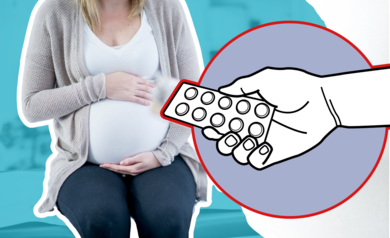- Health Conditions A-Z
- Health & Wellness
- Nutrition
- Fitness
- Health News
- Ayurveda
- Videos
- Medicine A-Z
- Parenting
- Web Stories
THIS Type of Vape Could Secretly Spike Your Blood Pressure and Heart Rate, Scientists Warn

Credits: Canva
E-cigarettes were once marketed as the sleek, “clean” alternative to traditional smoking, a gadget-friendly way to puff without the ash, tar, and lingering stench. But now, researchers are pointing fingers at a specific type of vape that might be giving your heart more trouble than you thought: the so-called “clear” vape.
These transparent-looking devices may seem lighter, fresher, and even harmless. But beneath the smooth packaging lie hidden synthetic cooling compounds that mimic the icy blast of menthol without the signature minty flavour. Unfortunately, this does not just tingle your throat; it quietly ramps up your blood pressure and heart rate.
The experiment that blew the cover
A joint study by Yale University and Boston University put these vapes to the test, with volunteers aged 18 to 45 puffing in carefully controlled conditions. Participants abstained from food, caffeine, tobacco, and exercise for hours before the trial, ensuring their baseline readings were squeaky clean. Then came the real test of steady three-to-four-second drags every 30 seconds over ten minutes.
Blood pressure and heart rate were recorded ten minutes after vaping. At the start, the numbers looked similar whether people used “clear” or non-clear vapes. But the aftermath told a different story. Users of “clear” e-cigarettes experienced a sharper spike in systolic and diastolic blood pressure, mean arterial pressure, and heart rate. In plain terms, their hearts were pumping harder and their blood vessels working overtime.
Why “clear” is not so clear
Unlike flavoured alternatives, “clear” vapes do not smell or taste like candy or fruit. They rely on synthetic chemicals that trick the body into sensing a cooling effect. It feels refreshing, almost like an icy drink on a hot day, but your cardiovascular system sees it differently. Researchers warn that these findings should set off alarms for regulators. With flavour bans becoming more common worldwide, unmonitored products like these might quietly slip through the cracks unless closely watched.
“Surveillance of new products is critically needed,” the team concluded, “to maximise the impact of flavour bans and protect adolescents and young adults.”
Vaping today, smoking tomorrow?
This is not the only piece of bad news about vaping that surfaced recently. A separate study from the University of York and the London School of Hygiene and Tropical Medicine found that young people who vape are three times more likely to take up smoking later in life.
Dr Su Golder, Associate Professor in Health Sciences at the University of York, said that the consistency in the evidence is striking. Across multiple studies, the trend remains the same: vaping acts like a gateway, nudging teenagers towards traditional cigarettes and all the well-documented harms that follow.
Her colleague, Dr Greg Hartwell, echoed the concern, saying that vaping often leads to smoking, which, of course, in turn, opens the door to the multitude of harms that conventional cigarettes bring.
Beyond the heart: other hidden harms
While clear vapes have their own cardiovascular red flags, the wider body of research on e-cigarettes is hardly comforting. Studies have linked vaping to increased risks of asthma, coughing, airway irritation, and possibly even mental health struggles like depression. Other reports point to connections with drug use, raising eyebrows about the broader behavioural consequences.
In short, it is not just your heart under pressure. Your lungs, mental health, and overall wellbeing could be caught in the crossfire too.
The UK crackdown on disposables
Governments are starting to notice. In the UK, as of 1 June, businesses can no longer sell or supply single-use vapes. While the move was partly driven by environmental concerns, discarded vapes are a toxic nightmare for wildlife. It also aims to curb the alarming rise of underage vaping. More than half of children who admitted to using vapes said they preferred disposable versions, making them a prime target for regulation.
“These products are not just an eyesore.” a government statement explained that they pose a huge risk to both the environment and to young people’s health.
In a nutshell, vaping, especially the “clear” kind, is not the harmless hobby it is often marketed to be. From spiking blood pressure to potentially paving the way toward smoking, these sleek devices carry more baggage than their transparent look suggests.
Is Tylenol Safe During Pregnancy? Scientists Question Autism & ADHD Risk

Credits: Health and me
Paracetamol or Tylenol is a popular pain and fever medication for decades for all and especially for pregnant women. Its safety record has for many years stood above the rest of the over-the-counter medications and is therefore used as the first-line medication for headache, fever, and mild pain in pregnancy. But new studies at Mount Sinai and Harvard T.H. Chan School of Public Health have opened the door to an important discussion: is prenatal exposure to acetaminophen associated with neurodevelopmental disorders including autism spectrum disorder (ASD) and attention-deficit/hyperactivity disorder (ADHD) in children?
A study led by Andrea Baccarelli, dean of Harvard T.H. Chan School of Public Health’s faculty of environmental health, published on August 14 in BMC Environmental Health, systematically reviewed 46 previous studies encompassing data from more than 100,000 participants. The aim was to investigate whether acetaminophen use during pregnancy correlates with neurodevelopmental disorders in children.
Applying the Navigation Guide Systematic Review method—a strict, gold-standard approach to assessing environmental health evidence—the study team evaluated the quality, risk of bias, and strength of evidence of all included research. By doing so, it was possible to conduct a solid synthesis of available scientific literature, and what emerged was a pattern: better-quality studies more often showed an association between prenatal acetaminophen exposure and offspring increased risk of ADHD and autism.
Researchers at the Icahn School of Medicine at Mount Sinai reiterated these alarms. The research highlighted that acetaminophen is not without risk, particularly considering its heavy use—more than half of pregnant women worldwide reportedly use it. Although the research does not establish causation, biological pathways may provide some insight. Acetaminophen passes through the placental membrane, which may initiate oxidative stress, hormonal disruption, and epigenetic changes that can disrupt fetal brain development.
Dr. Diddier Prada, a population health science and policy and environmental medicine assistant professor at Mount Sinai, pointed to the larger picture: "With so many people taking this drug, even a modest increase in risk could have huge public health implications."
How To Balance Risks and Usage?
What this actually indicates is not that pregnant women should never take acetaminophen—not at all. Fever and unrelieved pain during pregnancy are actually risks to the fetus as well, risks of miscarriage, preterm labor, and developmental problems. Rather, researchers at both Harvard and Mount Sinai simply suggest the use of acetaminophen with restraint: the minimum dose that will be effective, for as short a period as possible, always under a physician's care.
Clinical practice guidelines in the U.S., such as those of the American College of Obstetricians and Gynecologists, still favor acetaminophen over nonsteroidal anti-inflammatory agents such as ibuprofen, which are usually avoided in the second and third trimesters. The focus is on personalized risk-benefit evaluation, not blanket bans.
Although the new evidence raised some eyebrows, not all research supports an association. For example, in 2024, the Swedish cohort of about 2 million children, of which more than 180,000 were exposed to acetaminophen during pregnancy, identified no evidence of association with autism, ADHD, or intellectual disability. Likewise, previously, the FDA and the Society for Maternal-Fetal Medicine suggested that current studies are inconclusive or too small in number to change recommendations.
These contradictory findings demonstrate the nuance of research on prenatal effects of medication. Neurodevelopmental conditions such as autism and ADHD are affected by a wide range of genetic, environmental, and lifestyle variables. Separating the effect of acetaminophen from these elements is difficult, and large-scale, high-quality longitudinal studies are needed.
Why Is Tylenol A Concern For Pregnant Women?
Scientists investigating biological mechanisms have observed that acetaminophen has the potential to affect fetal brain growth through several mechanisms:
Oxidative Stress: Metabolism of acetaminophen can produce reactive oxygen species that could interfere with usual neural development.
Hormonal Disruption: Changes in maternal hormone levels may indirectly influence fetal neurodevelopment.
Epigenetic Changes: Exposure can induce changes in gene expression without changing DNA sequences, which can impact cognitive and behavioral outcomes.
Though these mechanisms are still being studied, they are a reasonable hypothesis for why some have seen associations with ADHD and autism.
How Does It Affect Future Prenatal Care?
The results have important public health consequences. Acetaminophen is the most widely used over-the-counter medication among pregnant women, so even a modest increase in risk of neurodevelopment would impact huge populations worldwide. The study highlights the necessity of new clinical guidelines, improved patient education, and investment in safer alternatives for pain and fever management for pregnant women.
Researchers emphasize that pregnant women should not stop taking acetaminophen on their own. Rather, open communication between healthcare providers and pregnant women is essential, comparing untreated pain and fever risk against possible neurodevelopmental issues. Non-pharmacologic pain relief, rest, and hydration can be considered when appropriate.
As ADHD and autism diagnoses surge globally, knowing the environmental and drug causes of neurodevelopment becomes ever more pressing. This research contributes to mounting evidence calling for caution in prenatal use of acetaminophen, while continuing to support further study to establish causation, dose-response, and alternative safer medicines.
Tylenol is still widely used as a suggested painkiller and fever reducer during pregnancy. However, recent research has shown possible associations with ADHD and autism in kids, which has led scientists to recommend careful, short-term use under medical guidance. Women in pregnancy should consult their doctor concerning any pain relief plan, weighing current needs against possible long-term impacts on child development.
Rebuilding Intimacy After Miscarriage Could Be Tough: Experts Weigh In On The Psychological And Physical Aspects

Credits: Canva
A miscarriage isn’t just about physical loss. It often brings a mix of emotions like grief, guilt, anxiety, and confusion that can seep into every corner of a relationship. Couples who once shared dreams of parenthood might suddenly find themselves navigating silence, distance, or mismatched timelines of healing. And when it comes to intimacy, things can get especially tricky.
Here is how to rebuild closeness — both emotional and physical — after such a painful experience, according to the experts.
Your Body and Heart Need Different Timelines
According to Dr Astha Dayal, Director of Obstetrics and Gynaecology at CK Birla Hospital, the body usually needs 2–3 weeks to recover after a miscarriage, though this varies depending on how far along the pregnancy was. But emotional healing? That’s a whole different ballgame.
“There is no fixed timeline for the heart,” she says. “One partner may feel ready to reconnect sooner, while the other needs more time. This is normal and should be respected.”
Instead of pressuring yourself to “move on”, Dr Dayal suggests giving yourself permission to simply be — whether that means sitting with sadness, embracing small joys, or telling your partner that intimacy feels overwhelming right now.
Why Miscarriage Happens
One of the hardest parts of miscarriage is the guilt that many women (and their partners) carry. But Dr Yashica Gudesar, Director and Unit Head, Obstetrics and Gynaecology, Max Super Speciality Hospital, wants couples to remember this: in almost 95% of cases, miscarriages happen for reasons beyond your control.
“Sometimes the mother’s health isn’t ideal, or the foetus develops with genetic flaws,” she explains. “The body ends the pregnancy because nature itself won’t allow a genetically abnormal foetus to develop.”
That means it’s not your fault. It’s not punishment. It’s not a failure. Understanding this can lift some of the emotional burden, making it easier to focus on healing together.
Redefining Intimacy
Sex isn’t the only way to feel close. In fact, after miscarriage, starting small is the healthiest approach.
“Intimacy doesn’t have to mean intercourse,” says Dr Dayal. “Physical touch, cuddling, or even just walking together can help rebuild closeness.”
Dr Gudesar echoes this, emphasising the power of “little gestures”, like holding hands, hugging, or sitting together in silence. These micro-moments can carry more weight than you think, offering comfort without pressure.
Reconnecting With Your Body
For many women, miscarriage brings a sense of betrayal by their own body. The very vessel meant to nurture life has instead let them down or at least, that’s how it can feel.
Dr Dayal encourages women to slowly rebuild trust with their bodies through gentle self-care. “Yoga, breathing exercises, or mindful walks can help you feel grounded again,” she says. This reconnection can lay the foundation for physical intimacy later.
When You’re Ready and When You’re Not
Physically, most doctors advise waiting 2–4 weeks before resuming sexual activity. Even then, discomfort, vaginal dryness, or emotional blockages can get in the way. Lubricants can help, but if pain persists, it’s important to see a gynaecologist to rule out infection or complications.
And if the thought of another pregnancy feels too soon, don’t hesitate to discuss contraception with your doctor. The point is to move forward at your pace, not society’s checklist.
Talking It Out
Miscarriage affects partners differently. One may crave intimacy for comfort, while the other pulls away. Left unspoken, this mismatch can create cracks in the relationship.
“Even ten minutes of open and honest conversation can prevent resentment,” says Dr Dayal. Whether it’s admitting you’re not ready, sharing fears, or simply saying you miss each other, these small exchanges go a long way.
Calling in Reinforcements
Sometimes, love alone isn’t enough to mend the emotional chasm left by miscarriage. That’s where counselling or therapy can make a difference.
Dr Gudesar recommends professional or peer support: “Talking to a therapist or joining a support group can help normalise the complex emotions couples face after miscarriage.” It also offers tools to navigate the grieving process without losing the bond between partners.
Patience, Grace, and Second Chances
Both experts agree on one thing: there is no single “right” way to heal. What matters most is patience — with yourself, your partner, and your body.
“Most women eventually go on to have healthy pregnancies,” Dr Dayal reminds us. “But emotional and physical healing doesn’t always happen at the same time. Give yourself grace to rediscover intimacy at your own pace.”
What Really Happens in Hernia Surgery? A Clear, Patient-Friendly Guide to All the Types Explained

Credits: Canva
You bend to lift a bag, sneeze a little too hard, or notice a strange bulge that was not there before. That small lump in your abdomen could be a hernia. While the word itself can sound alarming, hernia surgery today is routine and safe and comes in different types depending on your condition.
What’s a hernia?
A hernia is when an organ, often the gut or fatty tissue, pokes through a weak spot in your abdominal wall. Dr Pushkar Anand Singh, Senior Consultant – General and Laparoscopic Surgeon at Shri Ram Singh Hospital, explains it like this: “Think of it like a bulge in a worn-out tyre. The wall is supposed to hold everything in, but a weak spot lets the insides push out.”
This weak spot may form due to overexertion, like unsupervised weightlifting, constipation, or chronic cough, or it could be congenital (you were born with it). Sometimes it even develops at the site of an old surgery.
Who actually needs surgery?
Not everyone who discovers a hernia needs to be wheeled into an operating theatre right away. According to Dr Shrey Srivastava, Senior Consultant in Internal Medicine at Sharda Hospital, Greater Noida, surgery is usually advised when the hernia becomes painful, interferes with daily activities, or risks dangerous complications.
“Hernias that cannot be pushed back in, those that cause increasing pain, or worse, strangulated hernias where blood supply is cut off, need urgent surgery,” he says. Without timely intervention, this can lead to tissue death and potentially life-threatening infection.
On the flip side, if a hernia is tiny, painless, and not causing trouble, your doctor may simply keep an eye on it. But the general rule is that a hernia will not magically disappear on its own; sooner or later, surgery might be on the cards.
Open Hernia Repair
This is the old-school, tried-and-tested method. Surgeons make an incision right over the hernia, carefully push the bulging tissue back into place, repair the defect, and then reinforce the area with a mesh (like patching up that worn-out tyre).
“Open repair is highly cost-effective, and the outcomes are comparable with newer techniques,” says Dr Singh. For many patients, it remains the go-to option, especially when budget is a concern.
Laparoscopic Hernia Repair
Here, instead of one big cut, surgeons make three or four tiny incisions to slip in a camera and surgical instruments. The mesh is placed from the inside, which means no obvious scar at the hernia site.
The perks are smaller cuts, quicker healing, and less pain afterwards. However, it costs more, and as Dr Singh points out, “It is not recommended for patients with significant heart or lung issues, as the procedure puts more strain on the body.”
Robotic-Assisted Hernia Repair
Robots in surgery may sound like something out of a sci-fi movie, but they are here. Robotic-assisted hernia repair builds on the laparoscopic method, except the tools are controlled through a robotic console.
“The technology allows greater precision and 3D visualisation for the surgeon,” explains Dr Singh. It is slick and advanced, but it also comes with a hefty price tag. Since the outcomes are not dramatically better than laparoscopic surgery, most hospitals do not see it as a routine option.
How do doctors decide which is right?
With three different techniques on the table, how do surgeons pick? Dr Singh says the choice depends on several factors like patient health, cost considerations, size of the hernia, and the urgency of the situation.
Open surgery might suit a patient looking for a straightforward, affordable solution. Laparoscopic repair works well for those who want a quicker recovery and can afford the added cost. Robotic surgery, while cool, is usually reserved for centres with access to the technology and patients willing to pay extra for the latest option.
Do not fear the word “surgery”
While the thought of going under the knife can be nerve-wracking, hernia surgeries today are routine, safe, and highly successful. Most patients return to normal activities within weeks, and the mesh reinforcement greatly reduces the risk of recurrence.
“Hernias are common, but complications can be dangerous,” Dr Srivastava reminds. “If you are experiencing persistent pain, visible bulges, or swelling that would not go back inside, do not delay consulting a doctor.”
© 2024 Bennett, Coleman & Company Limited

